I like keeping rosemary and other herbs on my kitchen window sill. It’s so easy to grab a few twigs when I need to add some aromatics to my dish.
To my surprise one evening, I discovered that my rosemary had white spots on the leaves.
I’m sure you wouldn’t be happy with this discovery either, and I wasn’t sure if the rosemary was still safe to use. I decided not to take any chances at it, but I wanted to find out if I could save my herb.
Off I went, looking for answers. If you have a similar issue with white spots on your rosemary, you’re in the right place.
Table of Contents
What Causes White Spots on Rosemary?
Powdery mildew can leave white to light gray spots on the rosemary plant. Two, using cold water and tap water can cause white spots to appear on your rosemary’s leaves due to water burns and mineral deposits, respectively. Spider mites or leafhoppers can also cause white spots on rosemary.
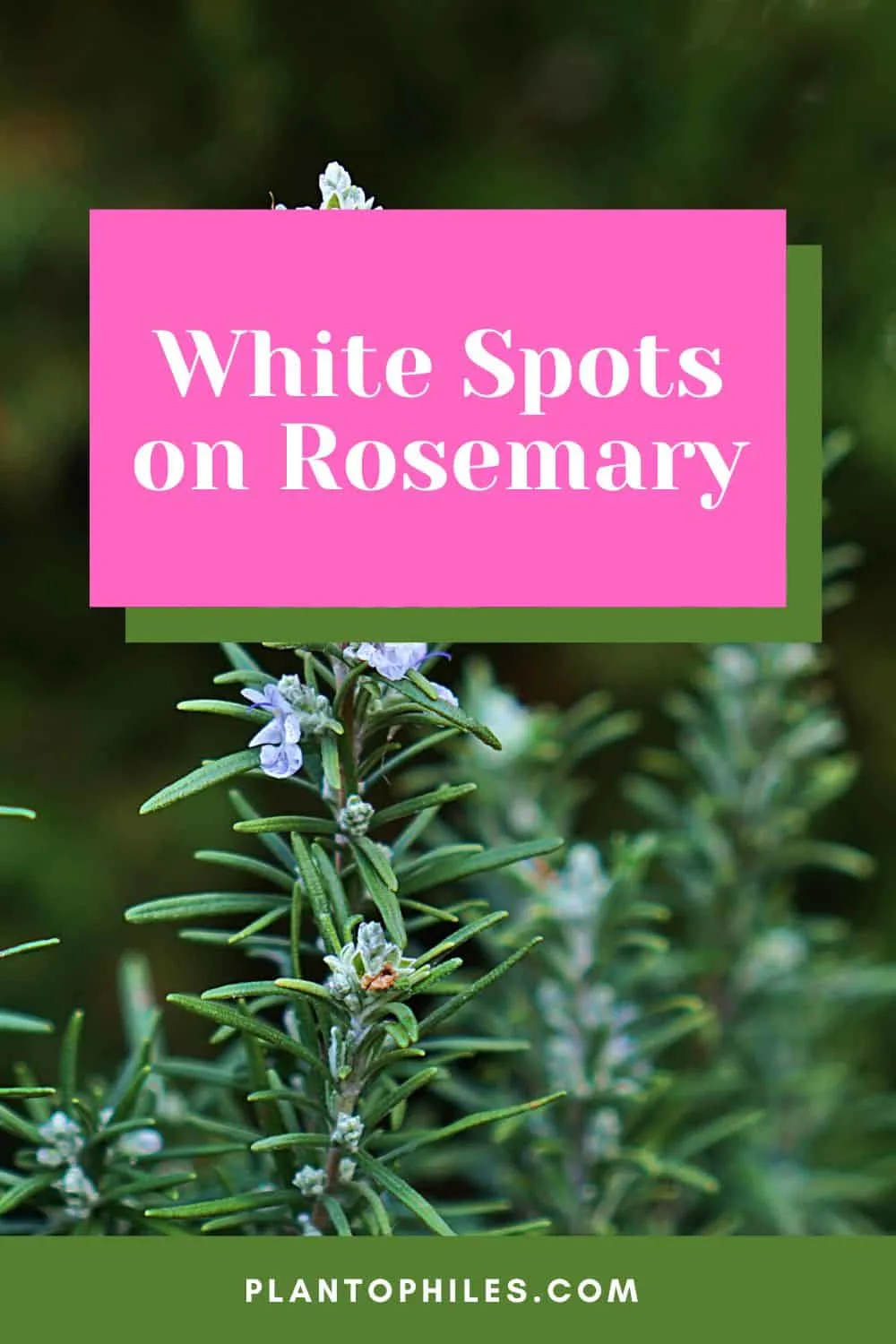
3 Reasons Why There Are White Spots on Your Rosemary
Here are the 3 most common reasons why white spots appear on your rosemary:
Reason 1: Powdery Mildew
When your rosemary is in the starting stages of a powdery mildew infection, you’ll see white spots that are tiny and dusty on the leaves. The spots may be light gray.
When the leaf is covered with powdery mildew, it can’t photosynthesize properly. The result is stunted growth. The leaves can also yellow, die, and fall off.

The cause of powdery mildew on your rosemary is tiny fungal spores that easily spread from one plant to another via wind. These fungal spores prefer dry leaf surfaces to grow and humid weather.
How to Prevent Powdery Mildew on Rosemary
Prevention is always better and the first option. To prevent powdery mildew from infecting your herbs, such as rosemary, ensure your plant gets a minimum of 6 hours of sunlight a day.
Keep the rosemary in a warm place, and make sure there’s plenty of airflow around the plant.
How to Treat Powdery Mildew on Rosemary
There are various options to treat powdery mildew on herbs like rosemary:
- Use a neem oil solution and coat the top and undersides of the leaves. Repeat every 7 to 14 days until there are no further signs of this fungal infection.
- Use a baking soda mix (1 gallon of water to 1.5 tablespoons of baking soda). Treat the rosemary weekly by coating both sides of the leaves.
- Use a compost tea solution. Buy a commercial compost tea kit, or make your own by mixing water and aged compost (with some manure) in a ratio of 5:1. The solution needs to sit for 7-14 days, then strain it. Add water until it looks like brewed tea. Spray the infected rosemary plants every 2 weeks during the growing season.
Reason 2: Cold Water
If you grow your rosemary indoors (like I do), the white spots you see can also be a result of cold water. When you water your rosemary with cold water, the plant goes into a bit of shock.
The cold water almost “burns” the leaves: the leaf cells break down and leave white calluses (aka white spots) behind.
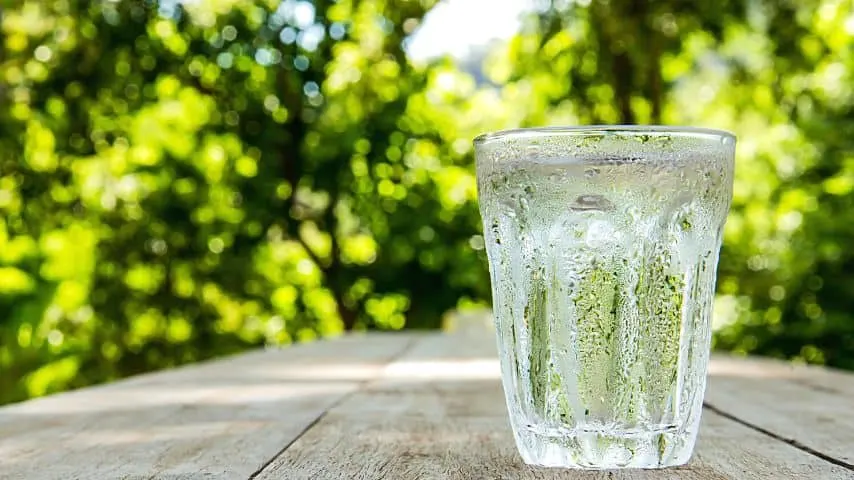
Luckily, cold water white spots aren’t harmful, so you can still use the rosemary.
Using tap water to water your herbs also leads to mineral deposits piling up and forming white spots. You can’t remove these white spots, so you’ll need to prune off the affected leaves.
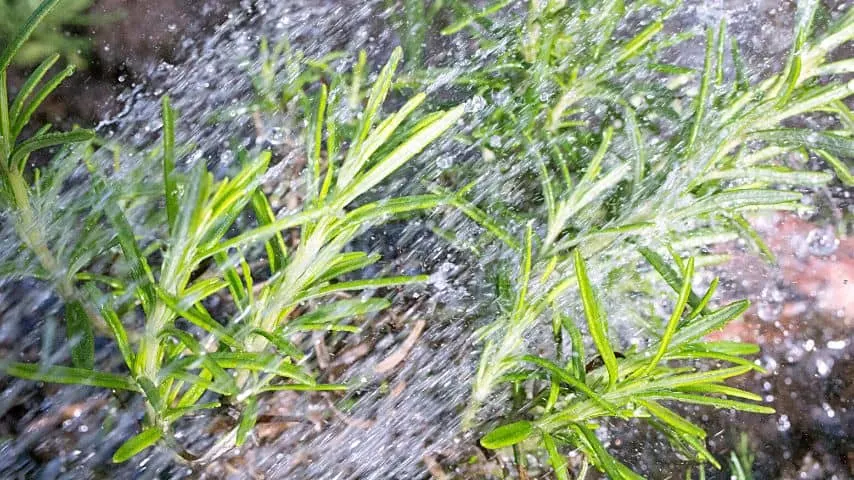
How to Treat Cold Water Spots on Rosemary
Don’t use cold water from the fridge or the tap. Rather let the water sit until it’s room temperature.
To avoid mineral deposits forming on the leaves, use filtered or rainwater to water the rosemary plants.
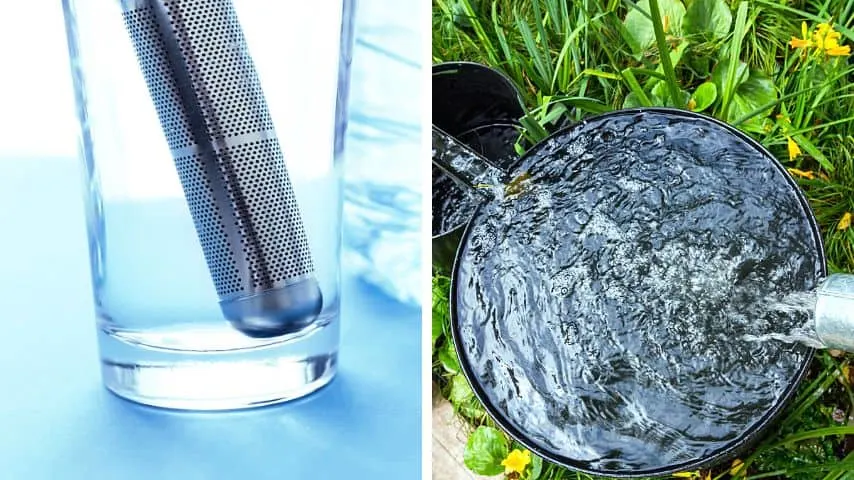
You can decrease the visibility of mineral-deposit white spots by mixing 1 part distilled water with 1 part white vinegar. Spray the mixture onto the rosemary.
Reason 3: Pest Infestation
A significant enemy of any plant is pests, and there are many of these little bugs.
Depending on the pest infestation, white spots can appear on your rosemary. The spots can also be yellow.
Spider mites and leafhoppers are likely to leave spots on your herbs. These white spots are the result of the pests sucking the sap — chlorophyll, water, and nutrients — from the plant’s leaves.
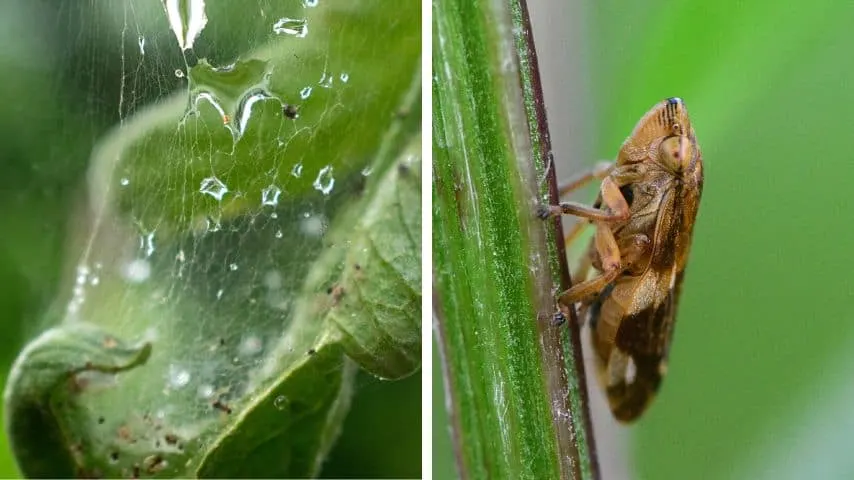
Spider mites, for example, also leave behind a toxin that contributes to the white spots forming on the rosemary.
How to Treat a Pest Infestation on Rosemary
There are various ways to treat a pest infestation.
For one, you can introduce natural predators. For example, brown and green lacewings, spiders, minute pirate bugs, damsel bugs, and lady beetles are natural enemies of leafhoppers.
Lady beetles, big-eyed bugs, and Western flower thrips are some natural predators of spider mites.
Secondly, you can also use an insecticidal spray or neem oil to rid your rosemary of pests.
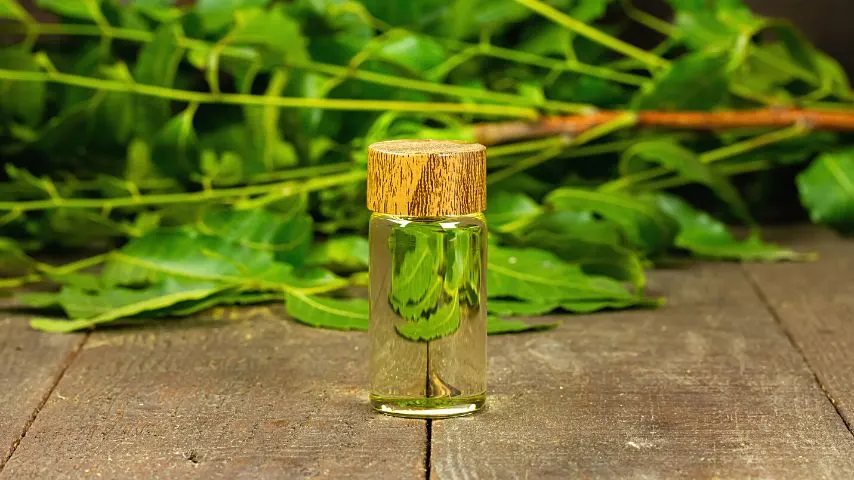
Frequently Asked Questions about White Spots on Rosemary
Can you eat rosemary with powdery mildew?
It’s best to not eat rosemary that has powdery mildew as a fungus is the cause of these white spots. While you may be okay after ingesting powdery-mildew rosemary, another person may not be okay because fungi can trigger an allergic reaction.
How do you treat fungus on rosemary?
Use a fungicide to treat rosemary that’s been infected with a fungus. You can also apply neem oil or mix a baking soda solution to treat the herbaceous plant.
Conclusion On White Spots on Rosemary
Rosemary gets white spots for the following reasons:
- Powdery mildew
- Cold and tap water
- Spider mites or leafhoppers

Daniel has been a plant enthusiast for over 20 years. He owns hundreds of houseplants and prepares for the chili growing seasons yearly with great anticipation. His favorite plants are plant species in the Araceae family, such as Monstera, Philodendron, and Anthurium. He also loves gardening and is growing hot peppers, tomatoes, and many more vegetables.


